
Kyle McCulloch is a Canadian writer for the TV cartoon South Park, and is largely responsible for the show's Canadian culture themes. He will also occasionally provide the voice for one-time use characters, such as Gary Harrison in "All About Mormons". He was a story editor and writer on SpongeBob SquarePants. He wrote one episode in season 4, and wrote "A Day Like This" song for the 10th anniversary special Truth or Square. He returned to work on the show in season 9, but left again to work on Lady Dynamite. He was set to make his feature film debut writing and directing The SpongeBob Movie: Sponge on the Run along with Paul Tibbitt, who was originally set to return to direct the film, but they were later replaced by The SpongeBob SquarePants Movie writer, Tim Hill.
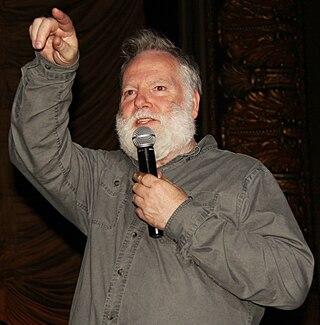
Guy Maddin is a Canadian screenwriter, director, author, cinematographer, and film editor of both features and short films, as well as an installation artist, from Winnipeg, Manitoba. Since completing his first film in 1985, Maddin has become one of Canada's most well-known and celebrated filmmakers.
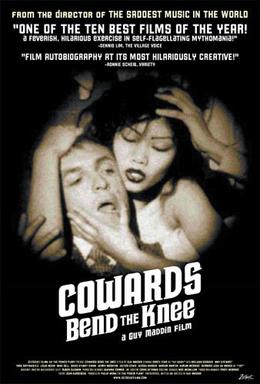
Cowards Bend the Knee is a 2003 film by Guy Maddin. Maddin directed Cowards Bend the Knee while in pre-production on The Saddest Music in the World, shooting entirely on Super-8mm film with a budget of $30,000.
John Paizs is a Canadian film director, writer and actor. He is most noted for his debut feature film, Crime Wave, which was presented at the 1985 Toronto International Film Festival. He was the male lead and also wrote and directed the film.

The Heart of the World is a Canadian short film written and directed by Guy Maddin, produced for the 2000 Toronto International Film Festival. Maddin was one of a number of directors commissioned to make four-minute short films that would screen prior to the various feature films at the 2000 festival as part of the special Preludes program. After hearing rumours that other directors were planning films with a small number of shots, Maddin decided that his film would instead contain over 100 shots per minute, and enough plot for a feature-length film. Maddin then wrote and shot The Heart of the World in the style of Russian constructivism, taking the commission at its literal face value, as a call to produce a propaganda film. Even in its expanded, 6-minute version, The Heart of the World runs at a breakneck speed, averaging roughly two shots per second, a pace intensified by the background music, Time, Forward! by Georgy Sviridov.

Ann Savage was an American film and television actress. She is best remembered as the greedy cigarette-puffing femme fatale in the critically acclaimed film noir Detour (1945). She was featured in more than 20 B movies between 1943 and 1946.
The Winnipeg Film Group (WFG) is an artist-run film education, production, distribution, and exhibition centre in Winnipeg, Manitoba, committed to promoting the art of Canadian cinema, especially independent cinema.
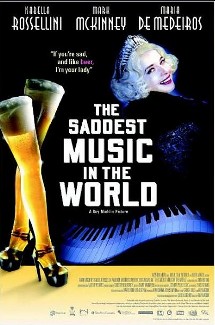
The Saddest Music in the World is a 2003 Canadian film directed by Guy Maddin. Budgeted at $3.8-million and shot over 24 days, the film marks Maddin's first collaboration with actor Isabella Rossellini.

Twilight of the Ice Nymphs is a 1997 fantasy romance film directed by Guy Maddin. The screenplay was written by George Toles and inspired by the novel Pan (1894) by Knut Hamsun, with an additional literary touchstones being the short story "La Vénus d'Ille" (1837) by Prosper Mérimée. Twilight of the Ice Nymphs was Maddin's second feature film in colour and his first shot in 35 mm, on a budget of $1.5 million. As seen in Noam Gonick's documentary Waiting for Twilight, Maddin was dissatisfied with the filmmaking process due to creative interference from his producers.
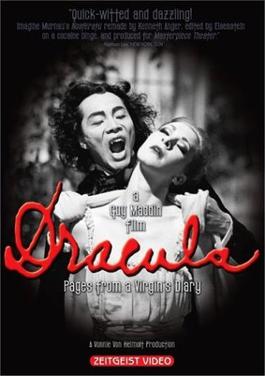
Dracula: Pages from a Virgin's Diary is a 2002 horror film directed by Guy Maddin, budgeted at $1.7 million and produced for the Canadian Broadcasting Corporation (CBC) as a dance film documenting a performance by the Royal Winnipeg Ballet adapting Bram Stoker's novel Dracula. Maddin elected to shoot the dance film in a fashion uncommon for such films, through close-ups and using jump cuts. Maddin also stayed close to the source material of Stoker's novel, emphasizing the xenophobia in the reactions of the main characters to Dracula.
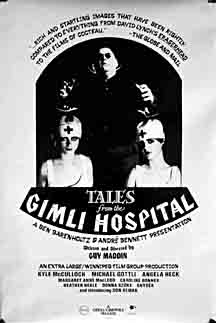
Tales from the Gimli Hospital is a 1988 film directed by Guy Maddin. His feature film debut, it was his second film after the short The Dead Father. Tales from the Gimli Hospital was shot in black and white on 16 mm film and stars Kyle McCulloch as Einar, a lonely fisherman who contracts smallpox and begins to compete with another patient, Gunnar for the attention of the young nurses.
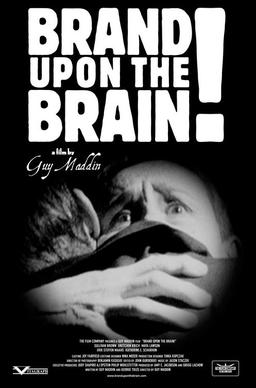
Brand upon the Brain! is a 2006 avant-garde silent film directed by Guy Maddin and shot in Seattle with local actors. Maddin directed the film from a script co-written with George Toles, shooting over nine days and editing over three months, on an estimated budget of $40,000.

Careful is a 1992 Canadian film directed by Guy Maddin. It is Maddin's third feature film and his first colour film, shot on 16mm on a budget of $1.1 million. At one point, Martin Scorsese had agreed to act in the film, as Count Knotkers, but bowed out to complete Cape Fear. Maddin pursued casting hockey star Bobby Hull, but ended up casting Paul Cox.
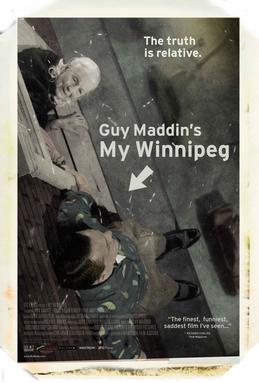
My Winnipeg is a 2007 Canadian film directed and written by Guy Maddin with dialogue by George Toles. Described by Maddin as a "docu-fantasia", that melds "personal history, civic tragedy, and mystical hypothesizing", the film is a surrealist mockumentary about Winnipeg, Maddin's home town. A New York Times article described the film's unconventional take on the documentary style by noting that it "skates along an icy edge between dreams and lucidity, fact and fiction, cinema and psychotherapy".
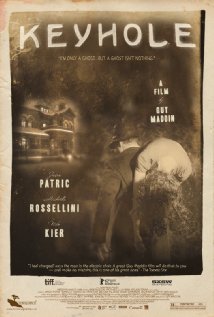
Keyhole is a 2011 Canadian film directed by Guy Maddin, starring Jason Patric, Isabella Rossellini, Udo Kier and Kevin McDonald. A surreal combination of gangster film and haunted house film, which draws on Homer's Odyssey as well, Keyhole tells the story of a Ulysses Pick (Patric), who returns to his home and embarks on an odyssey through the house, one room at a time. Filming began in Winnipeg on July 6, 2010. Maddin shot Keyhole digitally rather than his usual method of shooting on 16mm or Super-8mm.

Louis Negin was a British-born Canadian actor, best known for his roles in the films of Guy Maddin.
The Dead Father is a Canadian film directed by Guy Maddin, and his debut film. The short film tells a surrealist story of a Son's feelings of anger, sadness, and inadequacy after the return of his Dead Father. The Dead Father is shot in black and white on 16mm film and features Maddin's usual use on the stylistic conventions of silent-era cinema.
Deco Dawson is the professional name of Darryl Kinaschuk, a Ukrainian Canadian experimental filmmaker. He is most noted as a two-time winner of the Toronto International Film Festival Award for Best Canadian Short Film, winning at the 2001 Toronto International Film Festival for FILM(dzama) and at the 2012 Toronto International Film Festival for Keep a Modest Head, and was a shortlisted Canadian Screen Award nominee for Best Short Documentary for the latter film at the 1st Canadian Screen Awards in 2013.
Sissy Boy Slap Party is a Canadian experimental short film directed by Guy Maddin. Set on an island paradise, the film depicts a group of men who become caught up in a homoerotic apparent orgy of slapping after an older man warns them not to slap each other while he is away on an errand to buy condoms.
The Three Worlds of Nick is a Canadian anthology film, comprising John Paizs's short film trilogy of Springtime in Greenland (1981), Oak, Ivy, and Other Dead Elms (1982) and The International Style (1983). The films all starred Paizs as Nick, a "quiet man" who never speaks in any of the three films, but is placed in very different scenarios which each represent a different genre of film; Paizs described the character as "a Buster Keaton-like character in the sound era", and named him after Ernest Hemingway's recurring semi-autobiographical Nick Adams character.














